Indian Food in Amsterdam is loved highly due to the versatile & vibrant population in the city. Amsterdam has a history of international trade. It has become a mix of various cultures due to its welcoming nature. This mix is reflected in the food scene, with different languages, traditions & cuisines filling the streets & giving a taste of the global community living here. It is arguably Indian food, including the most classic of curries & regional specialties.
Among these culinary jewels, one finds Indian food in amsterdam with lavish & full-of-flavor dishes. The aromatic spices, huge diversity of dishes & balance of flavors make for reasons that have crowned this cuisine as one so dear to many residents and tourists in Amsterdam.
Unique Appeal for Indian Food in Amsterdam
For hundreds of years, Amsterdam has forged a tradition of tolerating differences & therefore stands out as a classic case of a multicultural city. Its residential streets have been peopled by citizens from all corners of the globe & truly hold together like a mosaic of cultures. Through the tolerance that characterizes this city, an atmosphere has been born where traditions, languages & customs from all parts of the world coexist in peaceful harmony.
If there is anything that is going to unify a metropolitan like Amsterdam, whose residents hail from different backgrounds, then it is the food. A variety of global cuisines not only satisfies the gastronomic desires of the residents but also acts as a bridging element across communities. Thus, the fact that one can find Indian food in Amsterdam among its many other options is a testament to Amsterdam’s cosmopolitan identity, which is connected to so many cultures.
One of the striking depictions of cultural richness across this cultural tapestry is Indian cuisine, which speaks volumes about the intricate blending of spices, the diversity of cooking methods & the variety of regional dishes, touting the identity of Indian food as a culinary journey through the subcontinent’s history and traditions.
In Amsterdam, all the Indian restaurants work as some kind of cultural ambassadors, allowing locals & visitors to experience the taste & stories woven into every single dish and, in doing so, relate the multicultural that is Amsterdam to the richness of Indian heritage. Thus, the popularity of Authentic Indian Food Amsterdam is not about taste alone but a testament to celebrating diversity within the city.

The Global Appeal of Indian Food in Amsterdam
Indian cuisine has been able to gain incomparable likeness all across the globe. It is interesting and intriguing because of its variety of flavors, deep-rooted cuisine tradition, performing in other countries as well, and the special way of cooking. From the loud streets of street food sellers to high-end restaurants, Indian food has made it into the hearts and stomachs of millions around the world.
The distinctiveness of Indian food lies in the use of a wide variety of aromatic spices and herbs, whose ideal as well also scientific close relationship with cooking has been discovered until now. Quite undoubtedly, the cold reception that Indian food received globally has worn off with the increasing number of Indian restaurants opening, Indian cooking classes being offered, and culinary events being hosted in many countries around the world.
This culinary obsession allows one not just to taste food, but rather to indulge in the richness of culture that is Indian cuisine in Amsterdam.
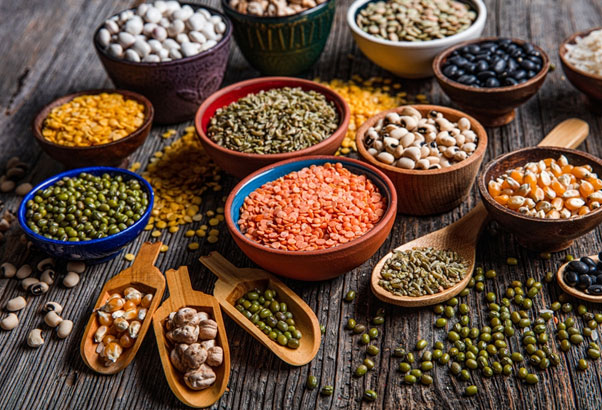
The Influence of Indian Spices And Flavors In International Cuisine
Personally, there are some indian spices whose distinctive, strong aroma has left a huge impact across global food scenes. Eventually, I figured out that some spices played well together — cumin, with coriander & turmeric; cardamom and fenugreek—all internationally incorporated by chefs and home cooks alike in innumerable dishes for depth and character.
Indian species are not only used in Indian food but they are also used in Europe, Asia and etc. Not only does this cross-continental exchange signify the fact that Indian cuisine is universally revered for its flavor & fragrance, but it is also indicative of how spice-potent smells are invited and adored across the globe.
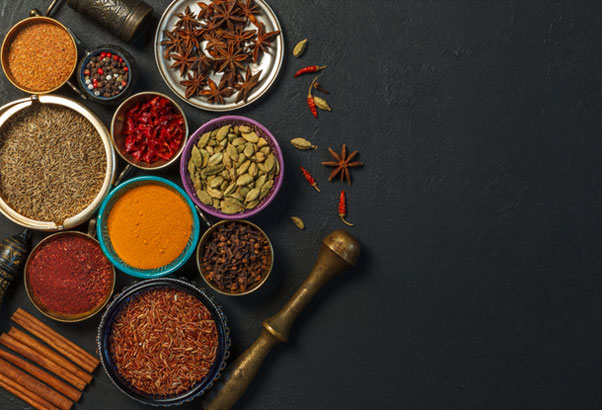
How Indian Cuisine Caters To Various Dietary Preferences
What is exciting about Indian food, though, is that it beautifully incorporates various eating habits. Be it vegetarian, vegan, or meaty, the list of Indian culinary traditions goes on and on.
Vegetarianism, being a dominant habit in Indian culture, has resulted in a huge repository of tasty vegetarian dishes, thereby making Indian cuisine an inclusive choice for a wide range of dietary choices.
The extensive use of legumes, lentils, vegetables, and grains in Indian cooking easily caters to people who are on the lookout for plant-based diets rich in various protein sources. Additionally, the wide range of spice blends and ways of cooking ensures that the simplest ingredient is elaborated into a filling and healthy meal. This flexibility has helped to further accelerate the popularity of already very popular Indian cuisine and make it more eclectic and excellent for everyone with different dietary needs, hence increasing its appeal globally.

Authenticity and Variety of Best Indian Food in Amsterdam
For its authenticity and diversity, Indian food has become so popular around the world. It’s a nourishment that rewards the taste senses with its vibrant range of flavours, reflecting its evolved history and sophisticated culinary tradition. In this journey, we try to explore the secret of the conventional cooking procedure that lends each noble Indian food an identity.
-
- 1. Culinary Diversity Across Regions
India’s huge diversity in its geography and culture has led to the creation of many regional cuisines. It is not just India’s spicy curries from the north or coconut-laced flavors of its southern treats; there’s a veritable rainbow of tastes to lay claim to a tantalising patchwork that has been carefully orchestrated over hundreds of years.
- 1. Culinary Diversity Across Regions
-
- 2. Spices and Seasonings
The right way to handle spices is one of the key characteristics of Authentic Indian food in Amsterdam. The symphony of tastes that satisfy the palate, as each region has its own mix. Thus, the process of picking the right proportions of spices can only come from a long legacy of culinary heritage. Even in such recipes, quantities are mentioned and seasonings are described vaguely, as per taste.
- 2. Spices and Seasonings
- 3. Traditional Cooking Techniques
These are pro tips for preparing Indian food with the most authentic flavour. Whether it is the slow North Indian tandoori style of cooking or South India’s traditional earthenware mode, their flavor addition not only adds a cultural feel to each dish but also raises a meal to more than just that.
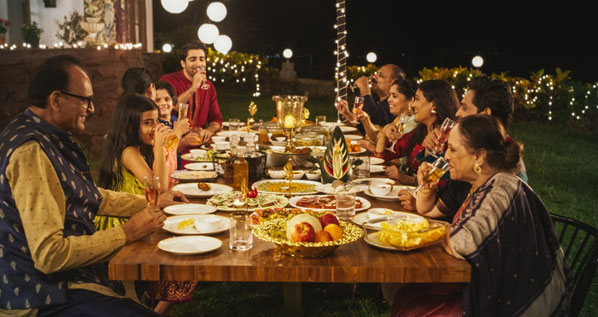
-
- 4. The Significance of Handcrafted Ingredients
Many recipes of Indian dishes have layers from ingredient preparation—hand-grinding spices to handmade bread, which is a staple in most Indian meals, chapatis & dosas. This mode of cooking constantly affects vitally important craftsmanship in the preparation of dishes in Indian cuisine.
- 4. The Significance of Handcrafted Ingredients
-
- 5. Celebrating Festivals and Occasions through Food:
Indian cuisine is deeply intertwined with cultural & religious celebrations. Special dishes prepared during festivals using time-honored recipes are a testament to the cultural significance of food in India. Each festival brings forth a new set of flavors & culinary traditions, adding to the diversity of the cuisine.
- 5. Celebrating Festivals and Occasions through Food:
- 6. Regional Street Food Culture
Street foods are part of India’s culinary heritage. Be it Delhi’s chaat or the vada pav of Mumbai, it is a street food that carries at large the local flavors and gives both tourists and locals a quick taste of the regional cuisine.
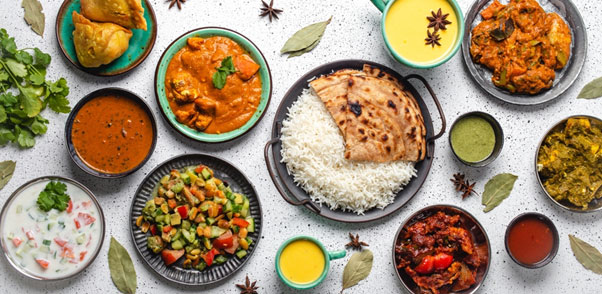
This extends the cultural story of each dish beyond just how it tastes, creating an authentic taste experience. Common methods of cooking, the sheer diversity and celebration of festivals with food, add form to this feast that is Indian cuisine. The journey into Indian food in Amsterdam is something that doesn’t just stay on the level of being a culinary experience; it does represent a cultural break straight down to the innards of the nation that boasts one hell of a food heritage.
Vegetarian and Vegan Options
It’s no secret that Amsterdam offers some splendid variety and quality of vegetarian and vegan Indian food, so it’s perfect for those limited by dietary constraints. And with its emphasis on vegetables, beans & spices, Indian cooking is a natural fit for a plant-based diet in terms of style; it’s a rich tapestry that attracts the eater across almost any taste spectrum.
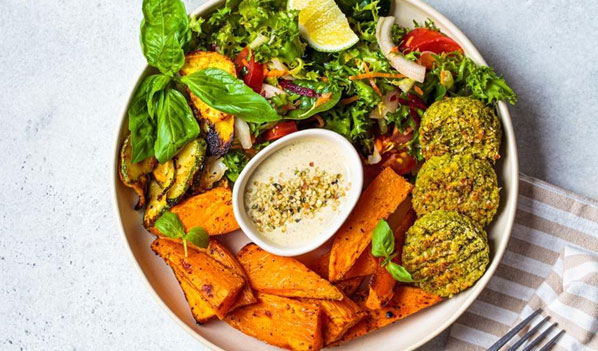
1. Vegetarian Delights: The choices you get back home in vegetarian food other than the regular vegetable curry are copious. Think Aloo Gobi, potatoes with cauliflower; Palak Paneer, spinach with cottage cheese; and Bhindi Masala, spiced okra.
2. Vegan-Friendly Fare: Many Indian dishes naturally align with vegan diets, as they often feature lentils, chickpeas, and a variety of vegetables. Classics like Chana Masala (chickpea curry), Daal Tadka (lentil stew), and Baingan Bharta (smoked eggplant) are not only flavorful but also entirely plant-based.
3. Bread and Rice Options: Indian cuisine offers a range of vegan-friendly breads like Roti and Chapati, as well as rice-based dishes such as Vegetable Biryani. These staples provide a hearty and satisfying foundation for a vegan meal.
Why Choose Annapurna For Indian Food in Amsterdam?
This version of Indian Food In Amsterdam says a lot about how committed the city is to diversity and, more importantly, an illustration of their openness towards global influences on culinary traditions. We offer a thoughtfully curated food menu that combines fresh ingredients, diverse flavors, and seasonal dishes to please every palate. In the busy Indian food scene, through which the restaurants can rightly be called cultural ambassadors, Amsterdam’s cosmopolitan fabric comes alive. It finds a global mass appeal because of its rich traditions and a vast range of flavors that contribute to its importance in the culinary scene.
In Amsterdam, Indian food is an experience, a cultural adventure through the heart of an empire bursting with culinary pride. Then there is the very nature of Indian cookery itself – it lends and adjusts perfectly to a wide gamut of dietary preferences from copious vegetarian to full-on vegan, making the cause for its favoritism among those who are hemmed in by diet.
In its very essence, the passion for Indian food across Amsterdam celebrates diversity, makes one traverse the global culinary journey, and is a cultural exploration that adds another flavorful chapter to the rich culinary story of the city. Enjoy the convenience of ordering online from our Amsterdam restaurant.
FAQs
2. What are some popular Indian dishes available in Amsterdam?
In Amsterdam, you will run across many varieties—classical curries, Chicken Tikka Masala or Butter Chicken, and regional specialties such as Goa Fish Curry or Rabaab Mix. Vegetarian tastes include Aloo Gobi, Palak Paneer, and Bhindi Masala; vegan delights like Chana Masala, Daal Tadka, or Baingan Bharta.
3. How does Indian cuisine in Amsterdam cater to different dietary preferences?
Indian cuisine makes use of a considerable amount of vegetables, legumes, and grains; it, therefore, caters very well to the different needs and preferences of diets. It offers rich vegetarian and vegan options, hence inclusive of people with different diet needs. The popular ones for vegetarians are Aloo Gobi and Palak Paneer, while for vegans, there are Chana Masala and Baingan Bharta.
4. What is it that is so special about Indian cuisine and can whet the appetite of people from all parts of the world?
It is diversely vibrant in flavors, rich in traditions regarding foods, and unique ways of cooking that make Indian cuisine special and exciting for the world. The various spices, herbs, and other aromatic ingredients seem to be a preservative that gives depth and character to the Indian dishes. Again, it is the preservative methods of preparation and the importance of foods in festivals, celebrations, and other rituals that give it an added charm and dimension and is popular with the rest of the world.



